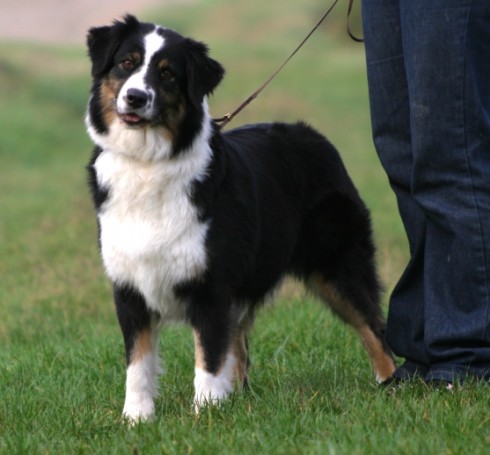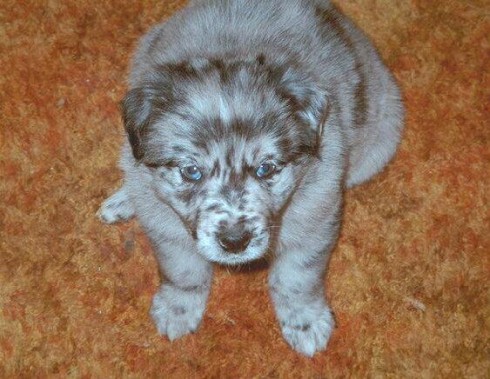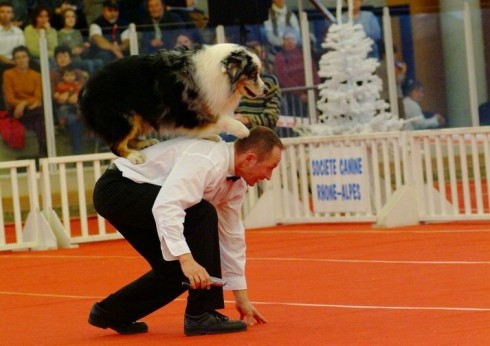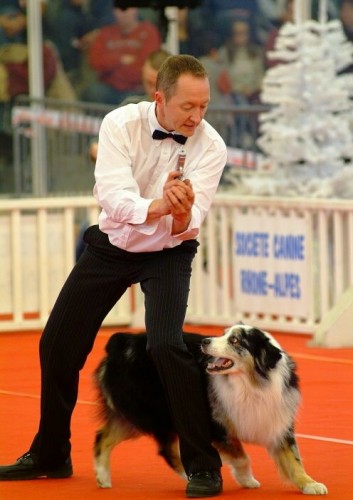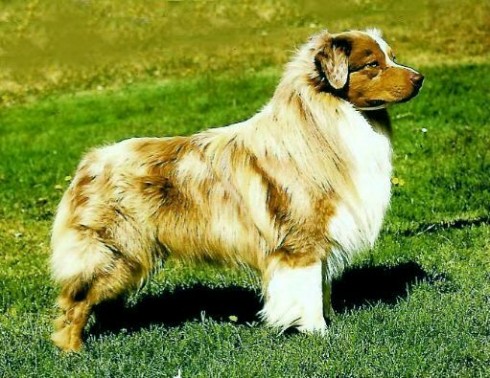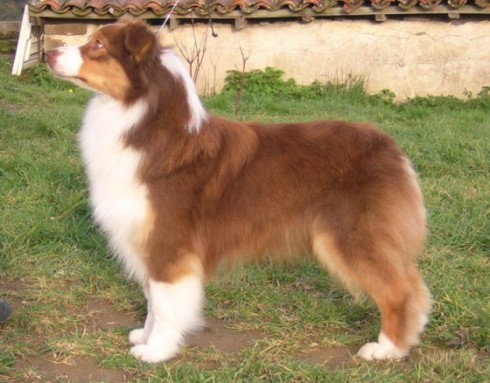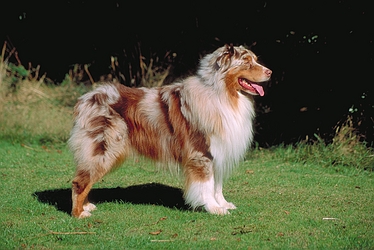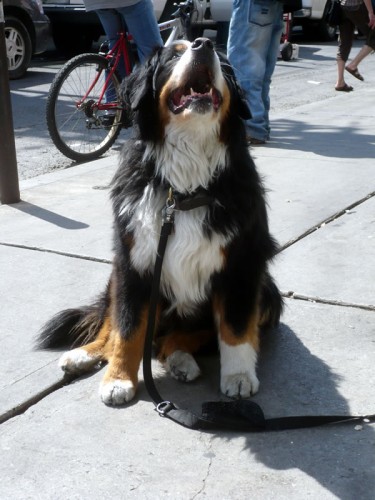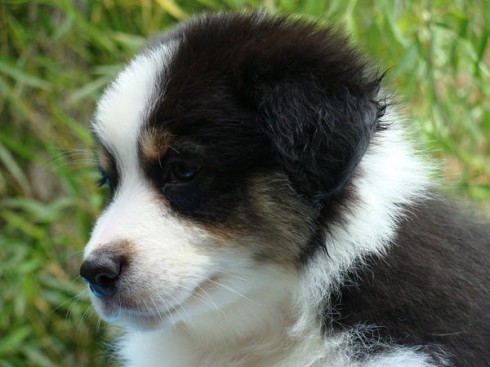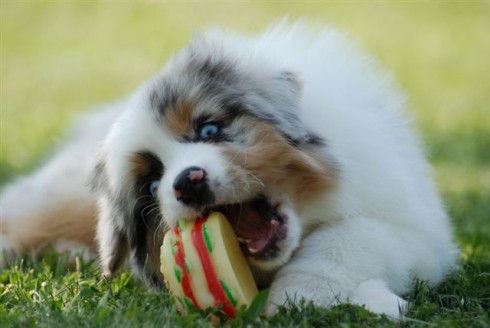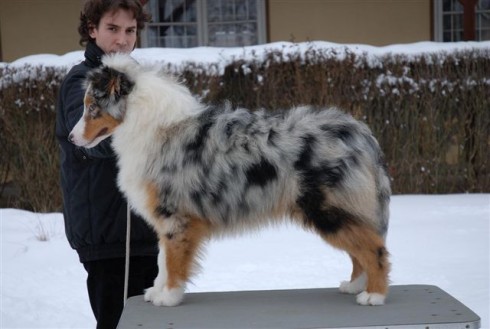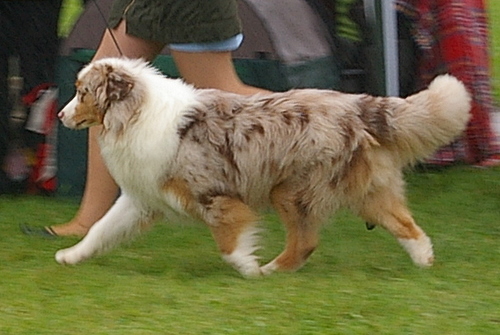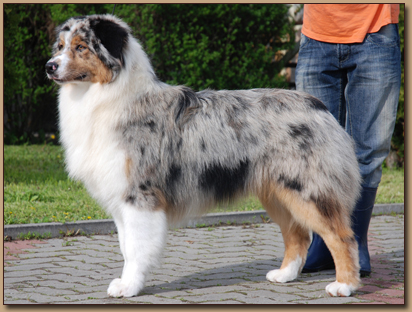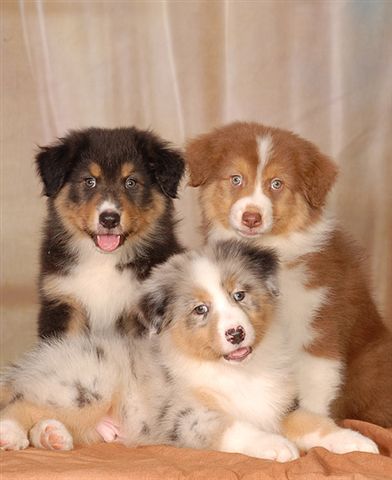Main Index
In Store
Our Web Store
Miniature Schnauzer Picture Gallery
Latest Dog Blogs
- What Are The Basic Commands To Train A Dog?
- PaySafe As The Most Popular Type Of Deposit
- Everything You Need To Know About Pet Sales
- Dogs Contribute To Our Physical And Mental Well Being
- How To Choose Where To Bet On Greyhounds In 2022
- Volunteer With Animals - How To Help Dogs Around The World
- Basic Understanding Of The House Edge
- Why You Should Get A Dog
- Top 20 Popular Dog Names Around The World
- Constipation in Dogs and How to Find Solutions
Australian Shepherd Dog
Australian Shepherd Dog Picture Gallery
Australian Shepherd Dog Breeders
Australian Shepherd Dog Clubs/Associations
The Full Australian Shepherd Dog Description
Intelligent and very alert, the Australian Shepherd gives complete devotion to his owner. All he asks in return is the chance to work. He was bred to herd livestock, and is serious and single-minded about his job.
Did you know?
The Australian Shepherd probably originated in the Basque region of the Pyrenees, mountains between Spain and France, but was dubbed the Australian Shepherd because of its association with Basque shepherds who came into the United States from Australia in the 1800s.
The Australian Shepherd was initially called by many names, including Spanish Shepherds, Pastor Dogs, Bob-Tails, Blues, Heelers, New Mexican Shepherds and California Shepherds.
So you want to own an Australian Shepherd?
The Australian Shepherd is an intelligent dog with strong herding and guarding instincts.
He is an agile dog who has the stamina to work all day.
One distinguishing characteristic of the Australian Shepherd is its tail, which is usually a naturally bobbed tail or it may be docked.
The Australian Shepherd is an intelligent, active dog who requires regular exercise.
He is good natured and even tempered, although he may be initially shy with strangers. He makes a loyal companion.
Indicative Breed Standard
General Appearance
Well balanced, length slightly greater than height. Medium size, solid and muscular. Various colours. Expression alert, keen and friendly.
Characteristics
Intelligent, strong herding and guarding instincts. Great stamina, loyal, attentive, animated, lithe, agile; able to change speed and direction instantly.
Temperament
Even disposition. May show initial reserve, never shy or aggressive.
Head and Skull
In proportion to body. Clean cut. Dry. Muzzle equal to, or a little shorter than length of skull. Skull of equal length and width with slight dome. Occiput may be apparent. From side, top of muzzle and skull on parallel planes. Moderate, well defined stop. Muzzle tapers slightly toward nose, ending in rounded tip. Nose: In blue merles and blacks - black; in red merles and reds - liver/brown. Merles may have small pink spots.
Eyes
Brown, blue or amber, or combination including flecks and marbling. Oval shaped, of moderate size, neither protruding nor sunken. Eye rims: blue merles and blacks - black; in red merles and reds - liver/brown.
Ears
Triangular; of moderate size and thickness, set high. Breaking forward or to side when attracted.
Mouth
Jaws strong with a perfect, regular and complete scissor bite, i.e. the upper teeth closely overlapping the lower teeth and set square to the jaws. Level bite tolerated.
Neck
Moderate length, strong, slightly arched; fitting smoothly into shoulders.
Forequarters
Shoulder blades long and flat, well laid back, set close at withers. Upper arms of comparable length. Legs straight from all sides, with strong oval bone. Medium length, slightly sloping pasterns.
Body
Strong, with firm level topline. Croup moderately sloping. Chest deep, of moderate width, with brisket reaching to elbow. Ribs well sprung and long. Underline shows moderate tuck-up.
Hindquarters
Same width as forequarters. Corresponding angulation of pelvis and upper tights to scapulae and upper arms. Well defined stifles, moderate angle of hock joints. Hocks well let down, perpendicular to round and parallel when viewed from rear.
Feet
Oval. Closely set, well arched toes; thick pads.
Tail
Customarily docked or may be naturally bobbed.
Docked: Straight, docked to no more than 10 cms (4ins) length.
Undocked: Set low following line of croup. Of moderate length. Never curled or carried over back. Well feathered. In overall balance with the rest of the dog.
Gait/Movement
Agile, smooth, free and easy, with good forward reach. Fore-and hindlegs move straight and parallel but may converge at speed.
Coat
Medium length and texture, straight to wavy, weather resistant with undercoat. Short hair on head, ears front of forelegs and below hock joints. Back of legs moderately feathered. Moderate mane, more pronounced in dogs than bitches.
Colour
Blue merle, black, red merle, red, all with or without tan points. May have white as follows: white collar no further back than point of withers at skin. White on neck as full or part collar, chest, muzzle, underparts, moderate blaze. Coloured coat surrounding pigmented eyerims.
Size
Dogs: 51-58 cms (20-23 inches). Bitches: 46-53 cms (18-21 inches).
About Our Article Directory
- Article
- 27 November 2010
- 2 comments
Canis lupus familiaris
- Breed Article
- 29 May 2010
- No comments
Quick Search
Donate
Latest Dog Pods
- Tips on How to Stop Your Dog from Biting
- Beware - Not All Advertised Dog Rescues Really Are! How Can You Know The Truth?
- Helpful Tips For Dog Obedience Problems
- How to Keep Dogs From Eating Poop
- Dog Grooming Tips - A General Overview of the Very Basics of Dog Grooming
- Recognising Different Types of Dog Obedience Problems
- 5 Important Tips On Feeding A Puppy



